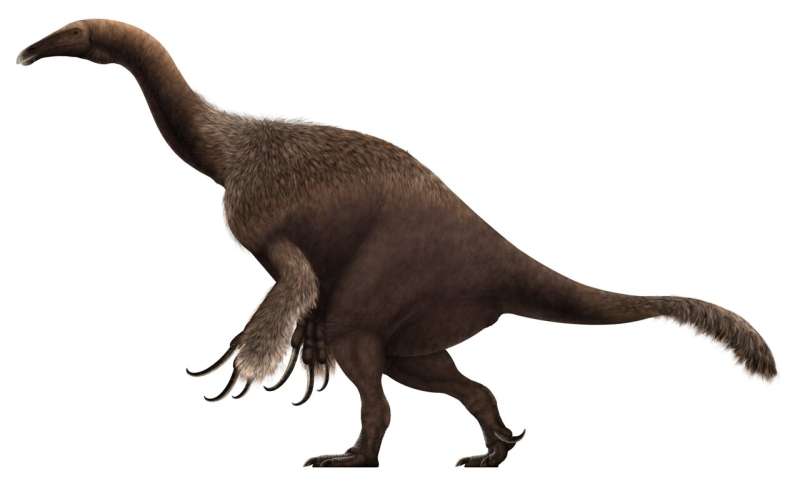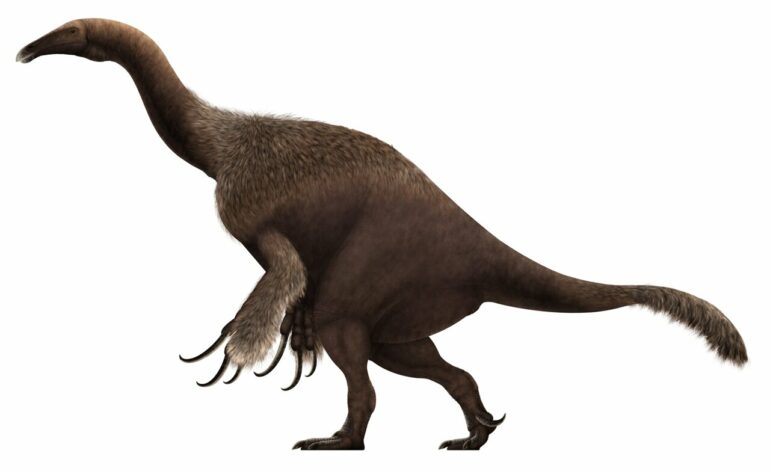Teeth found in Oxfordshire, Gloucestershire and Dorset are believed to belong to the maniraptorans, a group of dinosaurs, including Velociraptor, which include birds as their closest relatives. These dinosaurs evolved into numerous species during the Middle Jurassic, but because fossils during this time are scarce, knowledge of their origins are scarce too.
Researchers from the Natural History Museum and Birkbeck College used pioneering machine learning techniques to train computer models to identify the mystery teeth, which push back the origin of some of the group’s members by almost 30 million years.
Simon Wills, a Ph.D. student at the Natural History Museum who led the research, says, “Previous research had suggested that the maniraptorans were around in the Middle Jurassic, but the actual fossil evidence was patchy and disputed. Along with fossils found elsewhere, this research suggests the group had already achieved a global distribution by this time.”
“The teeth we analyzed include what are currently the only troodontid and therizinosaur fossils ever recorded from the U.K. and are the oldest evidence of these dinosaurs anywhere in the world.”

Late Cretaceous therizinosaurid Therizinosaurus cheloniformis. © PaleoNeolitic CC BY
The therizinosaur was a large herbivore dinosaur from the late Cretaceous known for its distinctive long scissor like claw bones. The unique look of this extinct animal led to its inclusion in the most recent Jurassic World film.
While previous studies have attempted to classify isolated teeth based on a variety of statistical methods, they’ve not always been particularly successful. The researchers behind the current study have been working to improve this, having demonstrated that machine learning models can achieve high accuracy in identifying isolated teeth from known taxa. The findings of the study were published in the journal Papers in Palaeontology.
“The use of machine learning in vertebrate paleontology is still in its infancy, although its usage is growing’ Simon adds.
“The main drawback is the need to have a comprehensive training dataset for the models to learn from.”
“In our study we are fortunate that there is already a relatively large dataset of dinosaur tooth measurements available that we could use to train the models.”
To translate the information contained in the fossils into data that could be used in the machine learning models, the researchers first had to produce a 3D model of each tooth from CT scanning. This was because the teeth were so small that taking measurements by hand was impractical.
The measurements of thousands of teeth from known dinosaur species were used to train three different models. Each model analyzes the data in a different way, with the results of each combined to give the most likely identity of each tooth.
When compared to other statistical methods, the machine learning models gave more accurate results and increased the researchers’ confidence that they would be able to classify unidentified teeth.
As technological innovations continue, and various efforts such as digitization projects make more information available to create training datasets, it is likely that machine learning will become more commonly applied to investigate a wide range of questions in paleontology.
More information:
Simon Wills et al, Machine learning confirms new records of maniraptoran theropods in Middle Jurassic UK microvertebrate faunas, Papers in Palaeontology (2023). DOI: 10.1002/spp2.1487
Provided by
Natural History Museum
This story is republished courtesy of Natural History Museum. Read the original story here
Citation:
Machine learning identifies first British fossil of therizinosaur dinosaur (2023, April 14)



